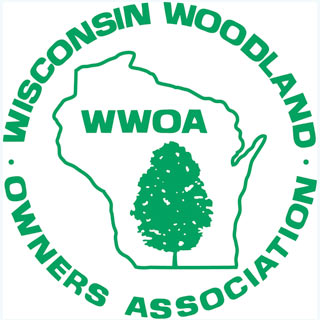 Imagine driving with your in-laws to a fish fry in northern Wisconsin, when suddenly, a tiny sign nestled in the grass at the side of the road catches your attention. It’s written, “Land For Sale”.
Imagine driving with your in-laws to a fish fry in northern Wisconsin, when suddenly, a tiny sign nestled in the grass at the side of the road catches your attention. It’s written, “Land For Sale”.
You glance at your spouse, mirroring a look of mischief in each other’s eyes and decisively turn around to investigate. That’s what Karen and Randy Cooper did.
After parking and walking in a bit further, the Coopers decided to call the real estate agent right then and there, taking the first steps in the process of obtaining their northern paradise. “We fell in love with the red pine right then,” Karen recalls. “It drew us in.”
That was just the beginning, though.
“We never thought we’d find a property so diverse and so well managed,” Randy continues. He describes the mix of black ash, white cedar, white pine, red maple, aspen, red oak, and others that comprise the mosaic of forest cover on their 110 acre property in Oconto County.
The couple’s passion for forestry started long before they acquired the northern property, though. Randy’s degree in Forestry was enough information for Karen to know she’d accept a blind date with him back in 1985. “My thinking was we’d probably have enough to talk about for one night. Little did I know I’d receive a forestry lesson nearly every day since then.”
Once they had settled into a permanent DNR Forestry station, Randy suggested that they plant “some” Christmas trees on Karen’s family farm in New Berlin so they would have some trees of their own trees to manage. Seven years and 15 acres of Christmas trees later, they heard the rule: never plant more Christmas trees than your wife can shear.
As a newly hired DNR forester, Randy’s co-worker advised him, “You’ll be a better forester if you’re a landowner.” The message sunk in when it came time for him and Karen to plant their own trees. “Landowners are attached to their trees and it’s hard to see them go,” he says.
It was Randy’s work with the WI DNR that first introduced them to WWOA. “I was staffing the DNR booth at the Milwaukee winter conference when WWOA’s past Executive Director, Betty Hauge, heard me refer a landowner to WWOA. She came up to me and asked if I was a member,” Randy says. “I said, ‘No, I don’t own land.’ She said, ‘You don’t need to!’ Karen and I first joined as associate members.”
From that point on, Randy and Karen have been active with WWOA. They were the property managers of the WWOA Foundation’s Seno Woodland Management Center for 7 years and have served on 3 annual meeting planning committees. After purchasing their northern property, they became involved with the Phoenix Falls chapter, serving on the chapter board and hosting field days.
The Coopers have also written articles for the magazine and have helped plan the Southeast Wisconsin Woodland Owners Conference since the early 90s. They received the Special Recognition Award from WWOA in 2010 for their dedication and promotion of WWOA activities in the Phoenix Falls and Kettle Moraine chapters and at WWOA Annual Meetings.
Karen says, “It was the people of WWOA that drew me in. There’s nowhere else I can be with people that I have more in common with that teach me more than I could be taught elsewhere.”
They encourage WWOA members to get involved, go to field days, and attend the annual meeting.
Karen notes that they used to plan their vacations around the annual meeting when they worked full time, “There’s not really anything about [it] we don’t like,” she says. “There’s such a variety of activities and it’s always in a different part of the state so you get to see and learn new things.”
She continues: “We love meeting new people from all over and it’s never awkward to start a conversation; the icebreaker is always ‘where is your land and what are you doing on it?’ And then when you see them next, you follow up on the project.”
The Coopers keep busy with their own projects in their retirement. They currently have a second timber sale in the works and are still planting Christmas trees in New Berlin. Karen often reminds Randy that they will be in their 70s when this spring crop is ready to be sold. “This is what tree farmers do; we plant trees,” he tells her.
Their diverse northern property is blessed with a trout stream and a granite outcrop, and recently, they partnered with Bob Hay from Turtles for Tomorrow to enhance a wood turtle nest site. They also maintain trails for access, fire protection, and wildlife habitat.
At the end of the day, the Coopers love to walk their woodlands together and simply take in the beauty, diversity, and wildlife.
